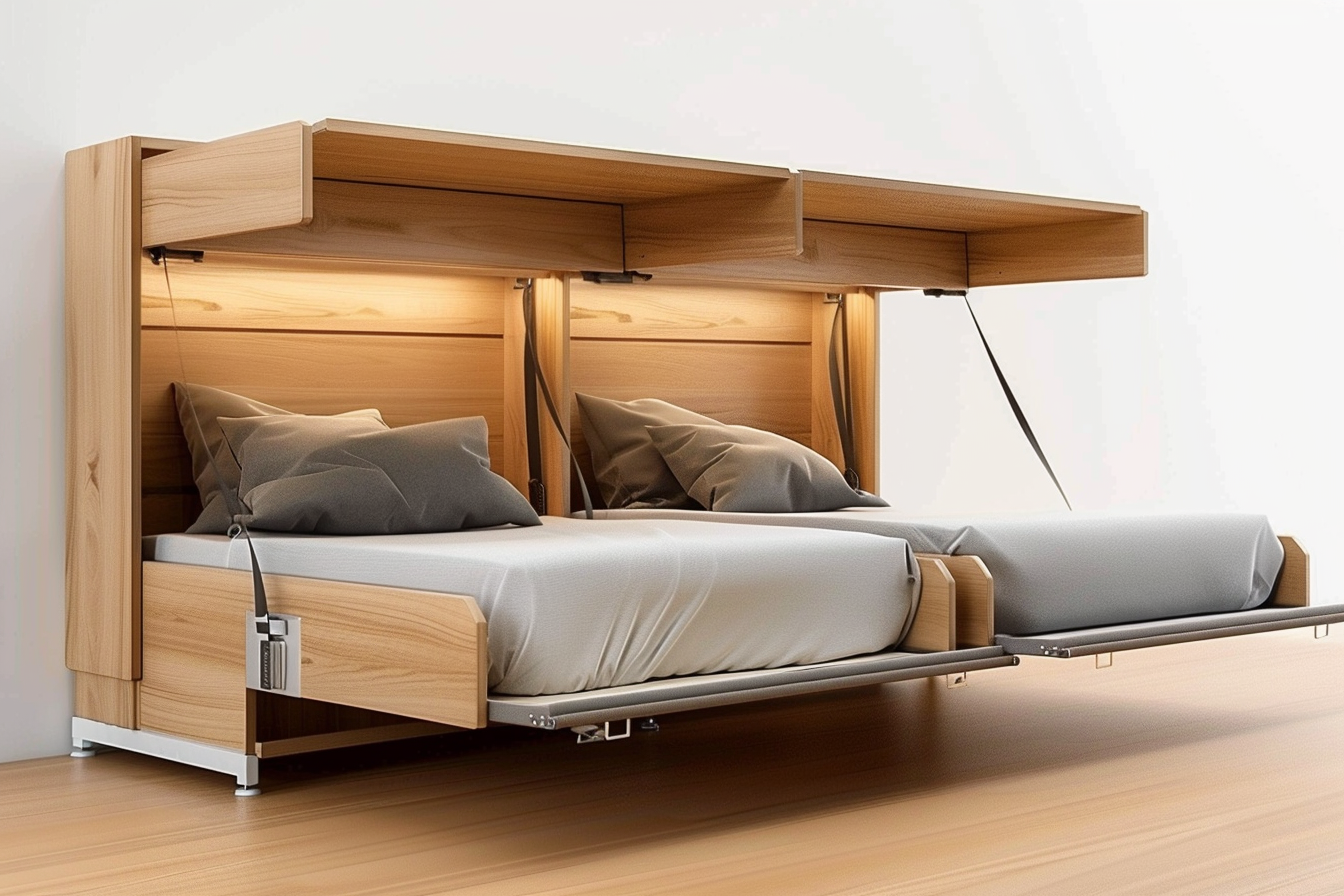Folding beds for small homes and flexible rooms
Finding the right folding bed can change how a room is used: allowing a daytime living area to become a sleeping space quickly and with minimal clutter. This article explains common folding bed types, what to look for in terms of materials and mechanism, and practical considerations for integrating a folding bed into your furniture plan in the UK. It aims to help you compare sofa beds, Murphy beds and freestanding folding beds so you can choose the most suitable solution for a guest room, studio flat, or multi‑purpose living area.

What to consider when choosing a bed for small spaces
Choosing the right bed for a compact space starts with measuring the room and planning circulation. Consider the mattress size you need and whether the folding mechanism requires clearance behind or in front of the unit. Think about mattress comfort—memory foam or sprung options—and the ease of folding or unfolding if the bed is used regularly. Noise and mechanism durability matter if you plan daily use. Also check storage needs: some folding beds include built‑in shelving or under‑bed storage, which can reduce the need for extra furniture in a small apartment.
How folding bed designs differ within furniture options
Folding beds appear in several furniture categories, from freestanding rollaway units to integrated wall systems. As furniture pieces, they range from simple metal frames on casters to upholstered units that match a room’s decor. Materials influence weight and longevity: steel frames are durable but heavier, while timber frames offer a warmer look. Mechanisms vary—pneumatic pistons, counterbalance springs, or manual lift systems—each affecting how easily the bed opens. Consider finishes and upholstery fabrics so the folding bed blends visually with your existing furniture and meets maintenance requirements for your household.
Pros and cons of a folding bed
Folding beds provide clear benefits: space efficiency, flexibility of room use, and often built‑in storage solutions. They are useful in flats, guest rooms, or multi‑use home offices. Downsides include limited mattress thickness compared with standard beds, potential wear on mechanisms with frequent use, and sometimes reduced insulation from floor drafts. If sleep quality is a priority, check mattress options and whether a thicker mattress is compatible with the folding system. Evaluate warranty and service options for mechanical parts, and assess whether the bed will be a primary sleeping solution or occasional use piece.
When to choose a sofa bed versus other options
A sofa bed is a dual‑purpose furniture piece that functions as seating during the day and a bed at night. Choose a sofa bed if you need comfortable daytime seating and occasional overnight accommodation. Consider seat depth and cushion firmness—these influence daytime comfort—and how the mattress storage affects width and thickness. Sofa beds tend to suit communal living rooms or where appearance is important, since they remain visible when not in use. For frequent nightly use, compare mechanisms and mattress quality with a dedicated folding bed or Murphy bed to ensure adequate long‑term comfort.
Understanding Murphy bed styles and installation
Murphy beds, or wall beds, fold vertically into a cabinet and are a common choice where floor space must be cleared for daytime activities. Styles vary from simple cabinet doors to integrated shelving units that form a full wall of furniture. Installation can be straightforward for preassembled kits or more complex when custom cabinetry or electrical features (like built‑in lighting) are added. Because Murphy beds attach to walls, confirm that your wall type and room layout are suitable and that you choose reputable local services for fitting. Professional installation can improve safety and ensure counterbalance systems operate correctly.
Conclusion
Folding beds offer practical solutions for limited spaces, with clear trade‑offs between convenience, comfort, and aesthetics. Evaluate the intended frequency of use, mattress compatibility, mechanism type, and how the piece will integrate with your existing furniture. Comparing sofa beds, rollaway folding beds, and Murphy beds against your space, budget and lifestyle will help you select an option that balances daily practicality and overnight comfort. Sources




